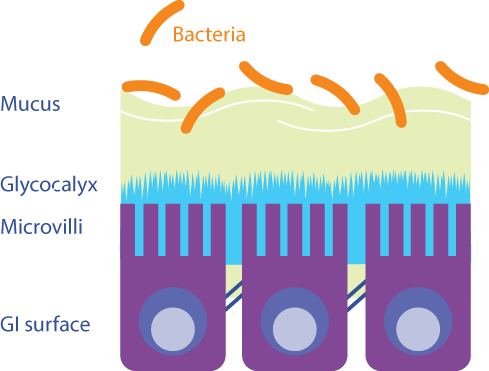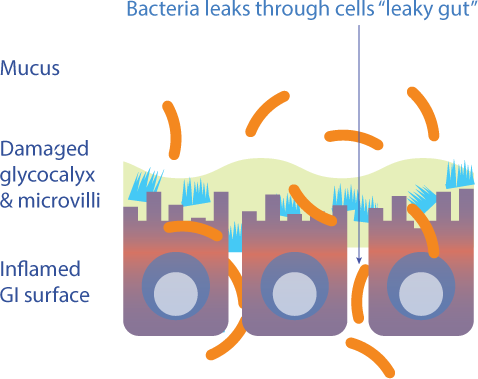Relief from guy injury caused by cancer therapies
SYGN305 is designed to reduce toxicity to the GI tract from cancer treatments, allowing patients to safely tolerate higher treatment doses needed to aggressively treat their cancer. In animal models, SYGN305 reduces chemical or radiation-induced mortality by restoring mucosal defenses and barriers and preventing bacterial translocation that could otherwise result in sepsis.
Deriving from our glycochemistry platform, SYGN305 has been shown to promote healing and reduce inflammation at the damaged tissue surface. In addition, this restoration of a healthy gut environment restored normal commensal flora and prevented overgrowth of pathogenic bacteria. Expansion indications include graft-versus-host disease, and GI damage caused by acute radiation syndrome.
How SYGN305 works at the GI mucosal surface
The cells lining the intestine are coated with a thick, natural glycopolymer layer called the glycocalyx. Radiation and chemotherapy damage this protective layer, allowing penetration of both “good” and “bad” microbes onto and through the intestinal cell wall causing infection, inflammation, and additional damage. This intestinal permeability also allows proteins and cellular debris to pass from inside the gastrointestinal tract through the cells lining the gut wall and into the circulation. SYGN305 mimics the barrier function of the glycocalyx and helps prevent further damage and permeability. SYGN305 also reduces the inflammatory response to damage, promoting healing of the GI mucosal surface and restoring the healthy microbiome.




